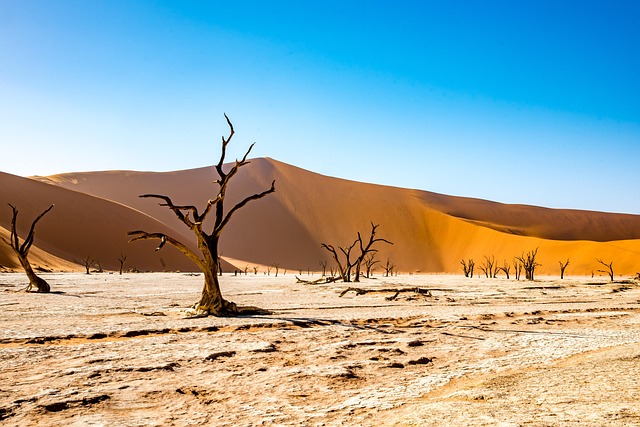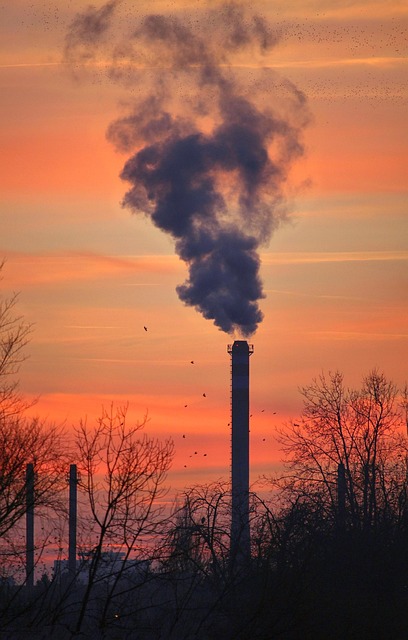
Climate change and its effect
“Climate change” means major, long-term shifts in weather patterns across the planet. A key part of this is global warming—it’s like the Earth’s air getting hotter because it’s trapping more heat from the sun.Imagine the Earth’s atmosphere as a comfortable blanket that keeps the planet at the right temperature. Lately, human activities have been adding an extra-thick layer to this blanket, making the planet too hot.
This added heat disrupts many things. For instance, warmer oceans fuel stronger storms, like hurricanes and typhoons. Meanwhile, melting ice at the North and South Poles causes sea levels to rise, which can lead to flooding in areas where people live.
Global warming
Global warming is a climate change phenomenon marked by a widespread rise in the Earth’s average temperatures, which disrupts weather patterns and ecosystems over extended periods. It is closely associated with the growing concentration of greenhouse gases in the atmosphere, intensifying the greenhouse effect.
Indeed, the Earth’s average temperature has risen by 0.8°C (33.4°F) since the late 19th century. Each of the past three decades has been hotter than any previous decade since records began in 1850.If CO2 emissions continue at the current rate, scientists predict that the average temperature could increase by 1.5°C to 5.3°C (34.7° to 41.5°F) by the year 2100. Without intervention, this rise could have severe impacts on both humanity and the natural world.
Changes in earth’s climate
Climate change is increasingly affecting the natural world. Deserts are spreading, while heatwaves and wildfires are occurring more frequently. Warming in the Arctic has accelerated the thawing of permafrost, the shrinking of glaciers, and the loss of sea ice. Rising temperatures are also driving more severe storms, droughts, and other extreme weather events. Rapid changes in environments such as mountains, coral reefs, and the Arctic are forcing numerous species to move or face extinction. Even if future warming is limited, some impacts will persist for centuries, including the warming of oceans, ocean acidification, and rising sea levels.
Climate change poses risks to humans, including more frequent flooding, extreme heat, reduced food and water availability, increased disease, and economic damage. It can also trigger human migration and conflict. The World Health Organization identifies climate change as one of the major threats to global health in the 21st century. Without measures to limit warming, societies and ecosystems will face increasingly severe hazards. Adaptation strategies, such as building flood defenses or developing drought-resistant crops, can help reduce some risks, though there are limits to what adaptation can achieve. Poorer populations contribute little to global emissions but are the most vulnerable and least able to cope with climate impacts.
Rising planetary temperatures
The global average surface temperature reflects the state of Earth’s energy balance—how much solar energy it absorbs compared to the heat it emits back into space. When these two are equal, the planet’s average temperature stays constant. If they are out of balance, the Earth either cools or warms. The rise in Earth’s average surface temperature is driven by human-generated greenhouse gases, which cause the planet to retain more energy than it releases.
Because the world’s oceans are vast and have high heat capacity, a tremendous amount of extra energy is needed to produce even a small increase in global temperature. The approximately 2-degree Fahrenheit (1-degree Celsius) rise in global average surface temperature since the pre-industrial period (1850–1900, according to NOAA) may seem minor, but it represents a substantial increase in heat energy moving through the entire Earth system, including the oceans, ice-covered regions, and atmosphere.
Environmental temperature shifts
Climate change refers to the long-term alteration of the Earth’s average temperatures and weather patterns.Over the past century, the planet has been heating up rapidly, causing shifts in global weather.From 2015 to 2024, the average global temperature was roughly 1.28°C higher than during the late 1800s, the period considered pre-industrial, according to the European Copernicus Climate Service.
The UK Met Office reports that since the 1980s, each decade has been warmer than the one before.In 2024, the Earth experienced its highest recorded temperatures, largely driven by climate change.That year also marked the first time the annual global temperature exceeded 1.5°C above pre-industrial levels, according to Copernicus.
Long-term climate variation
Higher levels of global warming raise the likelihood of crossing “tipping points”—critical thresholds beyond which certain major effects become unavoidable, even if temperatures later decrease. For example, the Greenland ice sheet is already experiencing melt, but if global temperatures rise between 1.7 °C and 2.3 °C, this melting would continue until the ice sheet disappears entirely. Even if warming is subsequently reduced to 1.5 °C or below, the ice loss would still be significantly greater than if temperatures had never surpassed the threshold.
Long-term impacts of climate change on oceans include continued ice melting, warming waters, rising sea levels, ocean acidification, and oxygen depletion. Because CO₂ remains in the atmosphere for centuries to millennia, these effects will persist over very long timescales. Estimates suggest a sea level rise of approximately 2.3 metres per degree Celsius over 2,000 years. The oceans absorb CO₂ slowly, so acidification will continue for hundreds to thousands of years. Even the deep ocean (below 2,000 metres) is already expected to lose more than 10% of its dissolved oxygen due to warming that has occurred so far. Additionally, the West Antarctic ice sheet appears to be on a path toward almost irreversible melting, which could raise sea levels by at least 3.3 metres over roughly 2,000 years.
Planetary climate disruption
The concept of planetary boundaries was first introduced in 2009 by a team of 28 internationally recognized scientists led by former center director Johan Rockström. Drawing on research from multiple areas of global environmental change, the framework identifies nine key Earth system processes that are influenced by human activity. Planetary boundaries provide measurable limits that define the safe level of human impact on these critical processes.
Planetary boundaries are interconnected. The long-term stability of the Earth system, which allowed human civilizations to develop and flourish, relies on the intricate interactions of biophysical processes. This interdependence means that we cannot treat the boundaries separately when making sustainability decisions. Any action impacting one boundary will influence the risks associated with the others. Only by staying within all nine boundaries can humanity maintain a safe operating space on Earth.
Earth’s warming trend
Over the past eight years, global temperatures have been the highest since systematic recordkeeping began in 1880. This yearly temperature information is part of the global climate record, which helps scientists understand how much and in what regions our planet has been heating up. In 2021, Earth was approximately 1.1°C (1.9°F) warmer than it was in the late 1800s, during the Industrial Revolution, when weather stations were first being established worldwide.
The map above shows global temperature deviations for 2021. It does not display actual temperatures; rather, it indicates how much warmer or cooler each area was compared to the average between 1951 and 1980. The bar chart below places 2021 in the context of the last 140 years. The numbers represent average surface temperatures across the entire planet for that year.
Earth’s warming trend
Over the past eight years, global temperatures have been the highest since systematic recordkeeping began in 1880. This yearly temperature information is part of the global climate record, which helps scientists understand how much and in what regions our planet has been heating up. In 2021, Earth was approximately 1.1°C (1.9°F) warmer than it was in the late 1800s, during the Industrial Revolution, when weather stations were first being established worldwide.
The map above shows global temperature deviations for 2021. It does not display actual temperatures; rather, it indicates how much warmer or cooler each area was compared to the average between 1951 and 1980. The bar chart below places 2021 in the context of the last 140 years. The numbers represent average surface temperatures across the entire planet for that year.
Climate instability
The global scientific consensus is that human activities have been the primary driver of the rise in greenhouse gases and the resulting global warming since the mid-20th century. If greenhouse gas emissions continue, they will lead to further warming and affect all parts of the climate system.
Australia’s evolving climate poses major challenges for people, communities, governments, businesses, industries, and the natural environment. Over the past six decades, the country has already experienced higher average temperatures, more frequent heatwaves, fewer cold days, changing rainfall patterns, and rising sea levels. These trends are expected to continue in the future.




